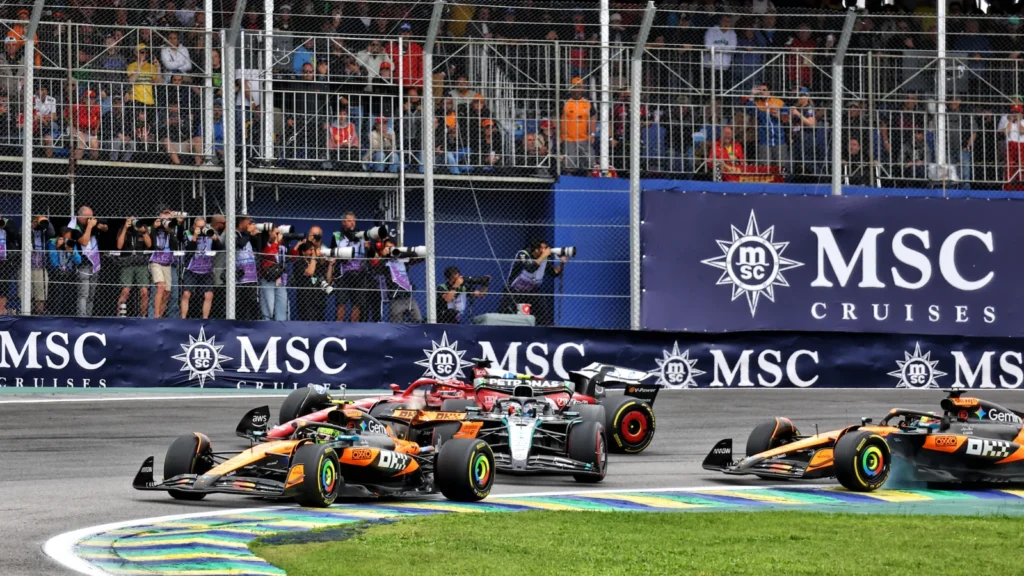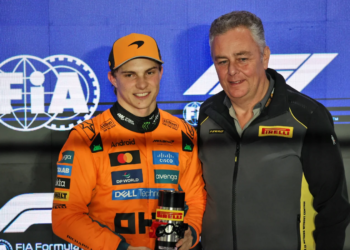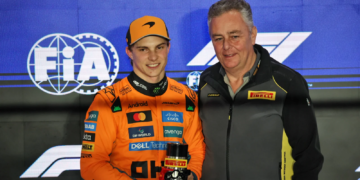The FIA has held talks with the Formula 1 grid ahead of the Qatar Grand Prix to address the growing concerns surrounding the sport’s guidelines.
F1 drivers, teams and fans have grown increasingly frustrated with the seemingly inconsistent stewards’ decisions, citing inconsistency is taking a toll on the overall racing seen.
Carlos Sainz started the weekend by calling upon Sky Sports’ analysts to join the decision-making committee, opining that “most of the time placed the blame on the right driver.”
The driving standards, introduced in 2022, aimed to bring a more consistent approach across the stewards’ panels.
However, drivers argue that these standards are applied too literally at times. Often, it ignores the realities of wheel-to-wheel racing.
This was emphasised by Ferrari’s Charles Leclerc, who discussed the frustrations of racing by these guidelines.
“Today we are really sticking to the book,” Leclerc told media including Motorsport Week. “And that makes it difficult to have common sense sometimes in specific situations.”

Growing frustrations over inconsistent stewarding
Throughout the meeting, drivers sought clarity on five moments across the past season. These racing incidents, in particular, highlighted potential flaws in the current driving standards.
Among them was the infamous clash between Antonelli, Piastri and Leclerc at Interlagos. The collision, which saw Leclerc retire from the race, resulted in a controversial 10-second penalty for Oscar Piastri. While in accordance with written guidelines, drivers argued that the penalty did not reflect the implications of the on-track situation.
Two other cases that were reviewed focused on the car positioning of drivers at the corner entry. The first was the Zandvoort collision between Carlos Sainz and Liam Lawson, where Sainz’s original penalty was later overturned following a Williams protest. The second was the Monza incident between Oliver Bearman and Sainz, where Bearman was penalised.
Both incidents stress that these rulings show focusing solely on car positioning at corner entry could result in decisions disconnected from the practicality of racing, ultimately causing somewhat ‘unfair’ penalties awarded to drivers.
However, the most talked about issue over the past few years has been track-limits controversies. Throughout the meeting, this was discussed in depth, particularly referencing this year’s clash between Lando Norris and Leclerc at the Circuit of the Americas. Posing the question, should drivers leaving the track in attempting an overtake be considered as track limits?
FIA racing guidelines updates
While no changes will be introduced immediately, the FIA revealed several key points that came from what it described as a “frank, open and collegial” discussion with the drivers.
One of the most notable outcomes was potentially delaying certain decisions until after the race in cases where the stewards lack full visibility or data. Drivers have long argued that immediate in-race penalties can be rushed and risk changing a race entirely. Sainz has been particularly vocal about this, stressing that a driver’s perspective would lead to a fairer assessment and punishment.
Discussions also extended to blue-flag procedures, a longstanding area of uncertainty for both lapped drivers and those attempting to pass. The FIA confirmed that these guidelines will be revisited as they aim to offer greater clarity on what is expected from cars being overtaken. Particularly on tighter circuits where racing lines narrow significantly.
Despite this, there has been no official word on the push for permanent FIA stewards. Drivers and teams across the grid believe that this would improve consistency throughout race results, the GDPA and FIA remain conflicted. Thus, no official commitment was made during Thursday’s meeting at the Qatar Grand Prix.
READ MORE – Charles Leclerc urges FIA not to change ‘black and white’ plank wear rules amid McLaren claim










Discussion about this post